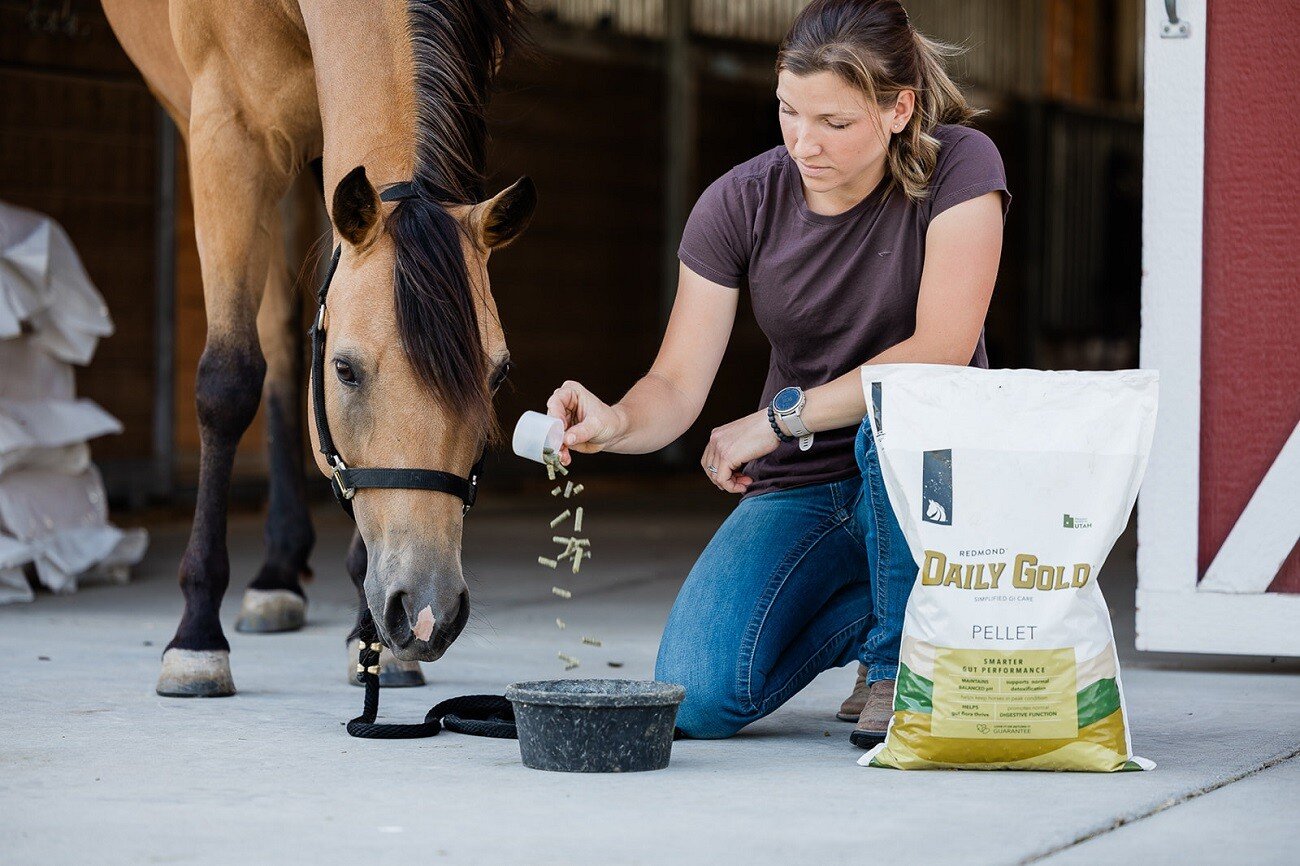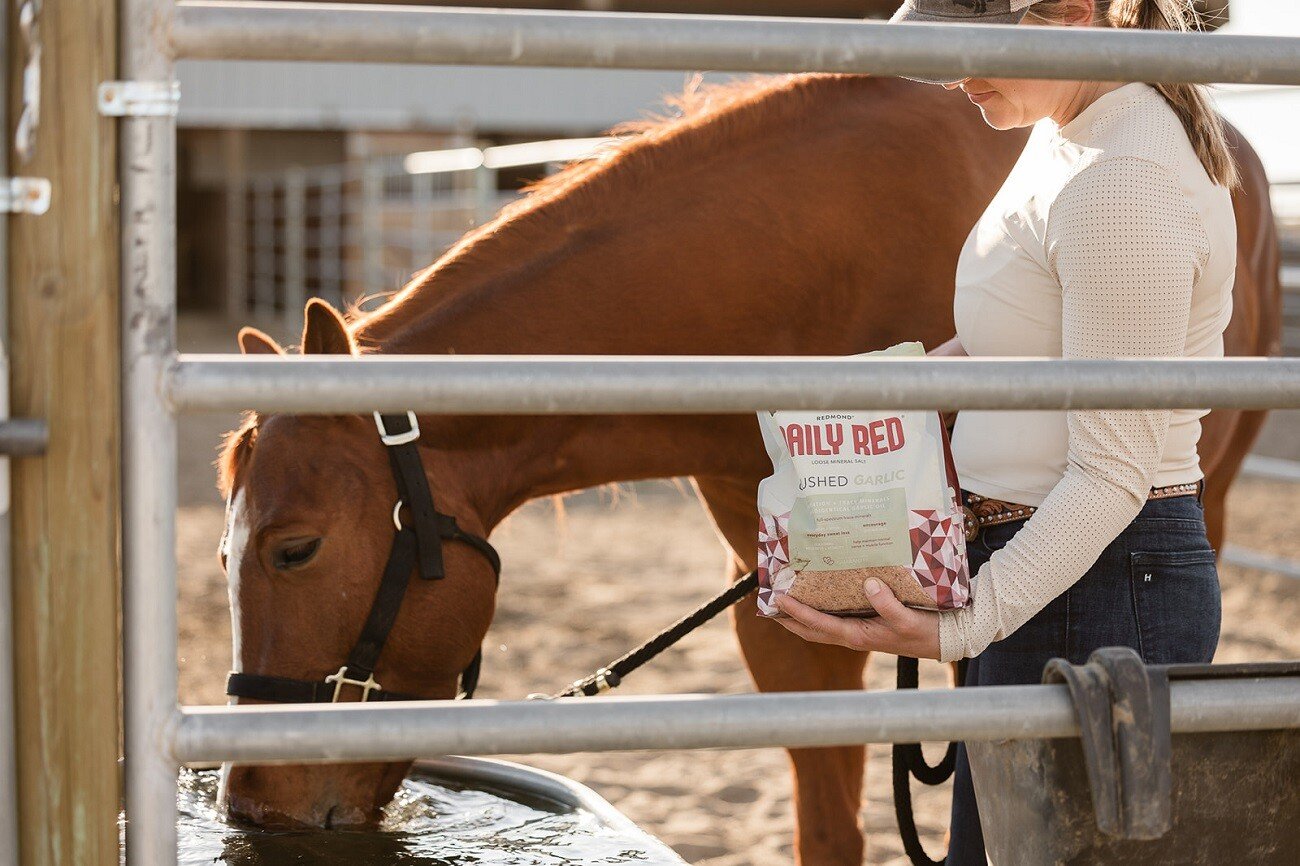Where Does Your Horse’s Salt Come From?
March 31, 2022
Where Does Your Horse’s Salt Come From?
Did you know 42 million tons of salt are produced in the United States each year? (2019, United States Geological Survey, USGS). Among all that quantity, there is quite a variation in quality—including among horse salts.
Let's learn more about where all that salt comes from, production methods, and the resulting physical and chemical properties that prove not all salt is created equal. Then you’ll better understand the incredible forces of nature that created Redmond salt and why it's the finest-sourced mineral salt you can feed your horse.
Where and How Salt Is Produced
Salt can't be produced just anywhere; certain geological and meteorological conditions must be met. That is why 92% of U.S. salt is produced in just 7 states. The location determines how the salt can be produced or harvested. Learn more about US salt production from the USGS website.
Mined Salt
Some areas are fortunate enough to contain natural subterranean salt deposits that can be mined. These deposits, like Redmond Minerals', are the remains of ancient sea beds, where excess minerals fell out of solution and built up on the seafloor. Mined salt, like Redmond Rock and Daily Red Crushed and Fortified loose salt for horses, generally contains other minerals within the salt which improves its taste, broadens its mineral profile, and enhances its color.
Solar Evaporated Salt
Salt evaporation through solar methods can be used in coastal areas with little rainfall. Saltwater fields are left to evaporate until salt crystals remain behind for harvesting. Inland locations sometimes pump water into subterranean salt deposits and bring the liquid salt brine to the surface where it's evaporated. Solar evaporation (and vacuum or open pan salt mentioned below) produces traditional white salt (sodium chloride) which white horse blocks are created from. This transition from solid to liquid back to solid alters the salt’s chemical and physical properties from its natural form.
Vacuum/Open Pan Salt
Some locations either don't have enough access to sunshine or have too much precipitation for solar evaporation. These operations pump liquid brine into large pans, boil off the water, and harvest the white salt crystals left behind. Similar to solar evaporation, this process of dissolving and evaporating changes the salt’s physical and chemical makeup from its natural state.
History of the Redmond Mineral Salt and Bentonite Clay Deposit
There are few locations on Earth that contain the richness found at the Redmond mineral deposit in central Utah. Nature has endowed this deposit with special chemical and physical properties that can be discovered in its unique geological history. Let's review the Redmond deposit's formation and timeline up to today.

Early Jurassic Period
Around 200 million years ago, a Jurassic sea (known as the Sundance Sea) extended from the western coast of modern-day Canada down into what is now the continental United States. Over time, this ancient seabed became a rich deposit for a wide profile of rare earth minerals. As the Sundance Sea retreated, the minerals hardened and crystallized.
Early Paleogene Period
Around 60 million years ago, a volcanic eruption deposited ash over this mineral deposit. The layer of ash created a natural, protective layer which preserved the minerals below. The volcanic ash weathered to become a nourishing layer of bentonite clay. Because clay particles naturally attract and retain ions and nutrients from their surroundings, the Redmond clay deposit also became imbued with the rich, deep sea minerals in its environment.
Central Utah, 1958-1960s
A prolonged drought forced the Bosshardt brothers, Milo and Lamar, to abandon their farming pursuits. The brothers knew Native Americans had once harvested salt from the area, and began harvesting salt from their land to provide for their families.
The Bosshardts quickly realized Redmond salt was different from other salts. They first noticed that it was far more effective at melting ice and snow than traditional white salt, and began selling it as a premium highway deicer (Ice Slicer).
The brothers then returned to their farming experience and discovered Redmond mineral salts and bentonite clay offered a wide variety of health benefits for soil, vegetation, and animals— including horses like yours! Redmond Equine and other Redmond companies carry on their legacy with natural human, livestock, deer, and horse supplements that are unparalleled in their taste, cost savings, and effectiveness.
Modern-Day Redmond, Utah
Today the Redmond mineral salt and clay deposit is a thriving operation for the ever expanding Redmond family of products. Over the decades, more and more industries have come to enjoy our unique profile of 60+ trace minerals.
Redmond is proud of our special geological history and takes our environmental stewardship over this deposit seriously. Our mine and its facilities are 99% powered by solar energy and we love to offer all-natural products to nourish the world from the ground up.
Try Natural Redmond Horse Salt Products
Has your horse tried our unique Redmond salt with 60+ trace minerals? We have a full lineup of rock salt licks and crushed salt to meet your horse's mineral needs every day, year round. Click below to shop now and help your horse live healthier, stay hydrated, and continue to thrive.
Learn More
- Learn the differences between a white salt block, mineral block, or natural rock salt for horses.
© Redmond Equine 2023. All rights reserved.
Related posts

Natural Horse Digestive Supplement | Redmond Daily Gold Pellets
Looking for effective digestive supplements for horses? Redmond Daily Gold pellets offer natural gastric support for horses in an easy-feed gut...
December 18, 2024

Why You Should Be Feeding Loose Salt for Horses
Is your horse ignoring its block? Switch to a natural lick and loose salt! Redmond has mined salt rocks and a full lineup of loose minerals for...



